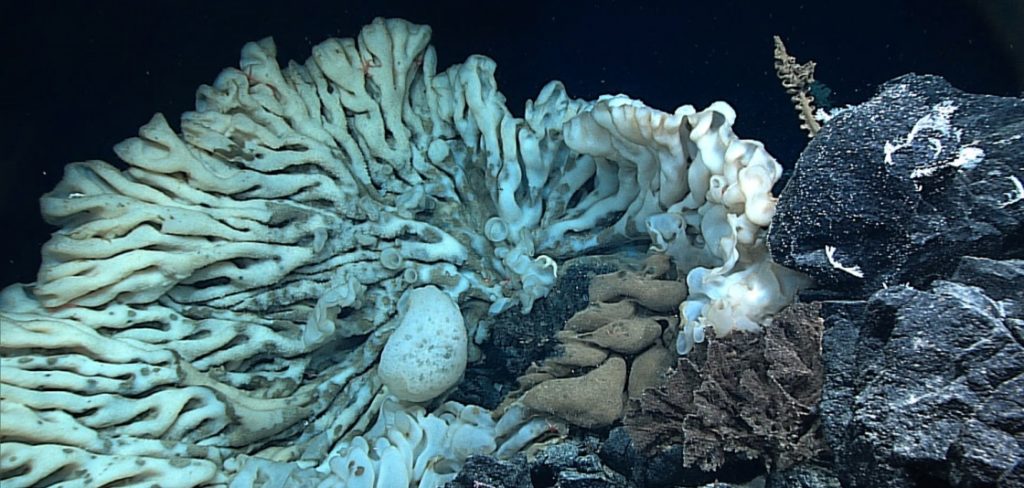Last month, Ocean Genome Legacy (OGL) collaborators announced the discovery of the largest sponge in the world. Thanks to OGL’s customized DNA preservation kit, scientists can now study the genetic secrets of this deep-sea giant.
The science team of the National Oceanic and Atmospheric Administration Ship Okeanos Explorer discovered the record-breaking sponge near Hawaii, in the depths of the Papahanaumokuakea Marine National Monument. The towering, pearl-toned sponge measured 3.5 meters (11.5 feet) long and 2 meters (6.5 feet) wide, the size of a minivan! With the help of the “OGL in a Box” kit, Okeanos scientists Dr. Daniel Wagner and Dr. Christopher Kelley preserved DNA from this unusual species (using a sample from a smaller individual), and they contributed the samples to OGL to promote future research.

Sponges help the ecosystem by filtering seawater and providing homes to smaller creatures, and they’ve inspired powerful medicines including the AIDS-fighting drug AZT. Who knows what we’ll learn from the enormous sponge? To keep protecting our oceans and their hidden wonders, the Okeanos Explorer continues to investigate deep-sea marine sanctuaries, and OGL preserves and distributes DNA samples from these incredible expeditions. You can see the scientific announcement of the sponge discovery here and read more about the findings here.
The OGL biorepository works with scientists around the globe to preserve valuable DNA samples that may someday lead to new cures and discoveries. If you would like to support our efforts, please consider making a gift.
